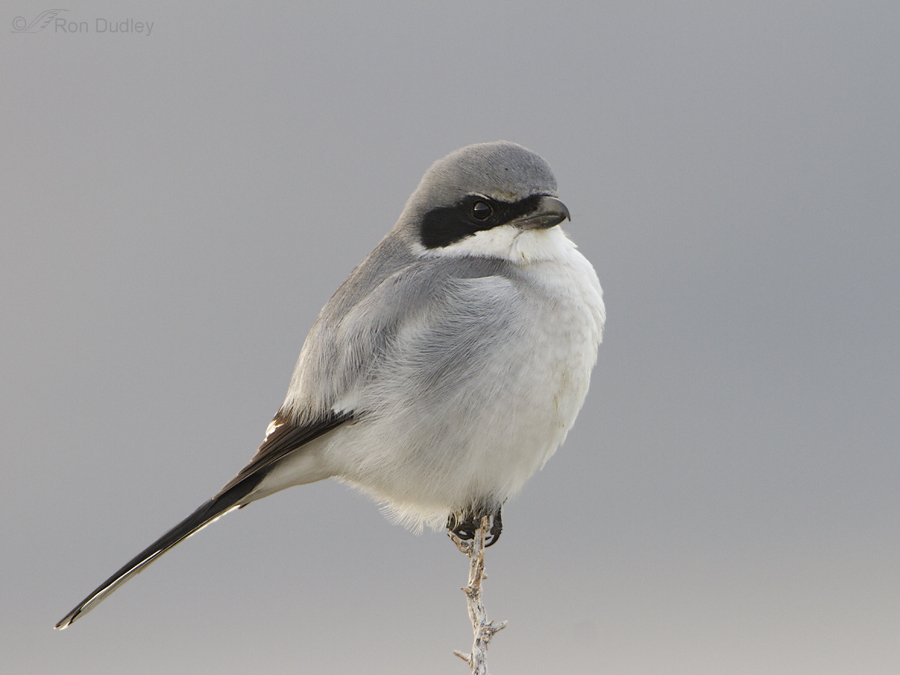Color temperature (white balance) can make a big difference in photography and nature photography is certainly no exception. I seldom manipulate white balance during processing and never do it if I’m confident that my camera has rendered the image to look like it did in the field.

1/000, f/7.1, ISO 640, 500 f/4, 1.4 tc, natural light, not set up or called in
The natural colors of the Loggerhead Shrike are gray, black and white but those colors are affected by the temperature of the light. I photographed this bird on November 26, 2012 at 7:56 am, very soon after the sun had come up over the Wasatch Mountains. Notice the warm, golden tones on the grays and the whites of the bird, and on the perch. They can even be seen in the almost black beak.

1/000, f/7.1, ISO 640, 500 f/4, 1.4 tc, natural light, not set up or called in
Just 20 minutes later, at 8:16 am, I photographed this shrike on a different perch. By then the sun was higher in the sky and the light was filtered through relatively thin clouds. I think the difference in color tone of the two images is dramatic.
Even though nature photographers often prefer warmer colors in their images I’m not suggesting that either warmer or cooler colors are necessarily “better” than the other. I’m only saying that they can have a huge overall effect on the image. And that mere minutes matter.
Ron


Very instructive illustration of an important principle. Thanks.
Re: Superbowl (mentioned by Janice). Ron, maybe it’s time for a post of a few of your past shots of Ravens.
Dwynn, I have very few images of ravens that have any particular merit. Two reasons for that: 1), they’re so darned hard to expose properly with those deep blacks that literally suck in light and 2), I ignore them all too often. Must change my ways…
Watching the Superbowl and reading interesting facts about light and photography. Ron, you are much more fun than football!
Your comment tickled my funnybone, Janice. Thanks for that!
Great example of the effects of light at different times producing different results. A good reason to be at your shooting location BEFORE you think the light will be “right”. (I’m still new at this and I shoot at all times of day – just to see for myself how much difference a picture taken at high noon may be from one taken at sunrise.)
That’s a good practice at the beginning, Wally – it helps in learning the actual effects of differing kinds of light.
How I would love to be able to capture this little one just half as well! Fantastic shots both! It does point out that both types of light can be sti Ning. As always, thanks so much for sharing your wonderful talents
You’re right, Charlotte. Both types of light can work very well.
I like the way that you share your huge experience with us. When we begin to photograph nature, there are so many aspects that we have to consider that it becomes sometimes a little bit overwhelming. Thank you very much for your generosity.
“Overwhelming” is a good word for it, Laval. There are just so many things to keep in the back of your mind while you’re shooting. I think that’s where experience comes in – so that “muscle memory” kicks in and you don’t really have to “think” about a lot of it.
=) SO true. I remember the 1st time I saw the Grand Canyon, I wondered why it wasn’t all orange and red. Because SO many of the photos you see are taken at sunset which colors everything, yes, orange and red. There’s LOTS of different colors in those layers. Now I know. =)
Very good example, Biobabbler. Thanks.